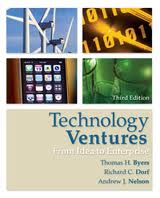Nov. 12, 2013 7:21 p.m. ET
In the world of on-demand tutoring, kids can log on 24/7 to sites with problems or questions. But how well do these really work? Sue Shellenbarger reports and mother Peggy Bennett shares her own experience. Photo: Justin Clemons for The Wall Street Journal.
It’s a nightly dilemma in many households: A student hits a wall doing homework, and parents are too tired, too busy—or too mystified—to help.
Ordering up a tutor is becoming as easy for kids as grabbing a late-night snack. Amid rapid growth in companies offering online, on-demand tutoring, students can use a credit card to connect, sometimes in less than a minute, with a live tutor. Such 24/7, no-appointment-needed services can be especially helpful to students with tight budgets or tight time frames or those in remote areas.
“All of a sudden, the world opens up to them,” says Michael Horn, executive director of education for the Clayton Christensen Institute, a San Mateo, Calif., education and health-care think tank.
That said, the quality of on-demand scholastic support can be uneven, and the catch-as-catch-can approach to enlisting a tutor may not be best for struggling students who need sustained help. Sessions can bog down on technical glitches, and language barriers can cause problems on sites that rely on tutors from abroad.
Chloe Friedman of Dallas uses Tutor.com for homework help between dance classes. Justin Clemons for The Wall Street Journal
Prices, ranging from about $24 to $45 an hour (and often prorated to the minute), are cheaper than what many skilled tutors charge in a student’s home. And parents and students say the quick homework fix can ease stress and make evenings at home more peaceful.
Whenever Peggy Bennett of Dallas tried to help her 13-year-old daughter, Chloe Friedman, with her eighth-grade physics and algebra homework, “we’d always end up bickering,” Ms. Bennett says, with Chloe often objecting that the teacher did it differently. “It was a lose-lose situation.”
Chloe says she was skeptical when her mom helped her sign up last month on Tutor.com, a New York City-based provider of on-demand tutoring. But after she logged on one evening for algebra help, a tutor, identified only by a first name and last initial, responded within a minute. Chloe says she was guided to figure out the answers, using text chat and an interactive “whiteboard” that displayed their writing and calculations on a shared screen. After hearing nothing but typing for about 10 minutes, Ms. Bennett says she heard Chloe yell from the other room, “They told me I did a good job!” Ms. Bennett adds, “That was all that she needed.”
Chloe, who takes classes in dance, acting and singing, also uses Tutor.com on hersmartphone at the dance studio between classes. She says she recently got help solving a math problem in less than 10 minutes.
Math Mentoring on the Fly: A text chat between Chloe Friedman of Dallas and her Tutor.com tutor. ‘He didn’t give me the answer,’ she says. ‘He went through it with me like my teacher would at school.’ Justin Clemons for The Wall Street Journal
Ms. Bennett now lets Chloe use her credit card to extend her Tutor.com subscription whenever she needs help. So far, Chloe has spent $79.99 for up to two hours of tutoring. Tutor.com subscribers pay once a month for time used; unused minutes can be carried to the next month.
Most sites enlist moonlighting or retired teachers, college professors or professionals with tutoring experience; most offer scheduled tutoring in addition to on-demand sessions. The most common users are middle- and high-schoolers, and college students taking basic courses.
About 95% of the 1,200 tutors available on Bangalore, India-based TutorVista are recruited from India, says C.S. Swaminathan, president of TutorVista, which was recently acquired by the London-based publishing and education companyPearson PSON.LN -0.76% PLC. Tutoring sessions with its mostly U.S.-based customers are usually held via whiteboard and text chat, to reduce potential language difficulties, Mr. Swaminathan says. Still, students say, language barriers can sometimes slow communication, and grammar glitches can occasionally creep in.
Saira Sultan, an Irvine, Calif., college student, says the TutorVista tutors she taps several times a week for help with her English and math courses are pleasant and knowledgeable. She recently uploaded a business letter she had been assigned to write for her English class, and the tutor marked errors in the text and texted instructions on correcting verb tenses, rearranging paragraphs and rephrasing sentences to read more smoothly, Ms. Sultan says. The one-on-one edits have helped her learn to write more clearly, she says.
The drawback, she says, is that communicating via text chat “takes a lot of time.” Mr. Swaminathan says TutorVista can provide audio-chat sessions if scheduled in advance.
As with in-person tutors, knowledge levels and teaching skills can be uneven. Stephanie Dobbs of Los Angeles says one InstaEDU tutor who responded to her daughter Sarah’s request for calculus help “didn’t know the material at all.” But Sarah, who uses the site two to three times a week, says it has so many tutors that switching is easy, and the convenience outweighs any drawbacks.
An InstaEDU spokeswoman says on occasion, tutors can halt billing while they figure out the material, or students can be given refunds or a different tutor.
James Nickerson agrees that on-demand tutors need winnowing. When he turned to InstaEDU recently to help his 16-year-old daughter Emma with an advanced-Latin class (they couldn’t find a skilled Latin tutor in their hometown of Stevens Point, Wis.), he didn’t turn Emma loose online. Instead, he sat beside her while she chose a tutor, urging her to bypass a math major who claimed a sideline expertise in Latin in favor of a New York University grad student majoring in classics. He also helped her schedule sessions, to provide continuity with the same tutor.
On-demand tutoring is just one of a growing array of online homework-help options. Khan Academy, one prominent example, offers interactive tutorials in addition to educational videos. Chegg.com provides answers to homework questions, while crowdsourcing sites such as StudyBlue enable students to share study guides, notes and flashcards.
Some school districts pay New York City-based TutaPoint and other online-tutoring sites to provide free access to students; about 2,000 libraries let students use Tutor.com without cost. Free access to tutoring sites can help level the playing field for students from all income groups—if they provide trained, qualified tutors, conduct background checks and safeguard users’ security, says Nora Carr, president of the National School Public Relations Association, a professional group.
But the sites can also tilt the playing field in favor of kids with plenty of money for tutoring help, creating pressure for other students to have a tutor too. Parents should monitor kids’ use of the sites and track fees, which “can get very expensive very quickly,” says Ms. Carr, who is chief of staff of the Guilford County Schools in Greensboro, N.C.
Yamini Naidu says online tutoring last year through InstaEDU helped her earn As in advanced-placement classes at her Beaverton, Ore., high school. Now a freshman at Yale University, Ms. Naidu works eight hours a week as an InstaEDU tutor.
She says that students who come to sessions with a list of questions or assignments to work on—and who block out time to concentrate—benefit most. Text chats occasionally stall, though, if students are distracted or start multitasking; Ms. Naidu tries to re-engage students by asking questions to spark their interest, she says.
Bharathy Chummar of Plantation, Fla., turned to the online tutoring site Eduboard last summer to help her 15-year-old son Prajwal research possible science-fair topics. Prajwal had a 45-minute audio and text chat with a tutor, who is also a physician, about an idea involving bacteria. The doctor later sent him a research summary with links to more studies.
Online tutors “fill a huge gap that can never be filled by parents,” Ms. Chummar says.
Write to Sue Shellenbarger at sue.shellenbarger@wsj.com

























